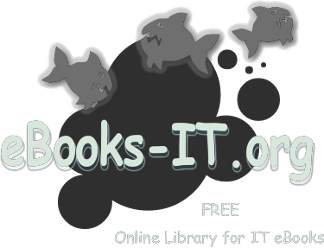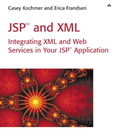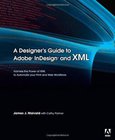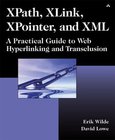Perl and XML
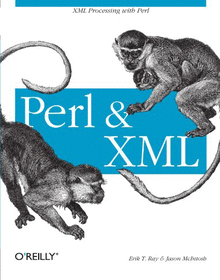
Book Details:
| Publisher: | O'Reilly Media |
| Series: | OReilly |
| Author: | Erik T. Ray |
| Edition: | 1 |
| ISBN-10: | 059600205X |
| ISBN-13: | 9780596002053 |
| Pages: | 218 |
| Published: | May 02 2002 |
| Posted: | Nov 19 2014 |
| Language: | English |
| Book format: | |
| Book size: | 0.89 MB |
Book Description:
XML is a text-based markup language that has taken the programming world by storm. More powerful than HTML yet less demanding than SGML, XML has proven itself to be flexible and resilient. XML is the perfect tool for formatting documents with even the smallest bit of complexity, from Web pages to legal contracts to books. However, XML has also proven itself to be indispensable for organizing and conveying other sorts of data as well, thus its central role in web services like SOAP and XML-RPC.As the Perl programming language was tailor-made for manipulating text, few people have disputed the fact that Perl and XML are perfectly suited for one another. The only question has been what's the best way to do it. That's where this book comes in.Perl XML is aimed at Perl programmers who need to work with XML documents and data. The book covers all the major modules for XML processing in Perl, including XML::Simple, XML::Parser, XML::LibXML, XML::XPath, XML::Writer, XML::Pyx, XML::Parser::PerlSAX, XML::SAX, XML::SimpleObject, XML::TreeBuilder, XML::Grove, XML::DOM, XML::RSS, XML::Generator::DBI, and SOAP::Lite. But this book is more than just a listing of modules; it gives a complete, comprehensive tour of the landscape of Perl and XML, making sense of the myriad of modules, terminology, and techniques. This book covers:parsing XML documents and writing them out again working with event streams and SAX tree processing and the Document Object Model advanced tree processing with XPath and XSLT Most valuably, the last two chapters of Perl XML give complete examples of XML applications, pulling together all the tools at your disposal. All together, Perl XML is the single book that gives you a solid grounding in XML processing with Perl.
Download Link:
Related Books:
JSP and XML
Integrating XML and Web Services in Your JSP Application
JavaServer Pages technology allows Web developers and designers to rapidly develop and easily maintain information-rich, dynamic Web pages that are platform independent. JavaServer Pages technology uses XML-like tags and "scriptlets" written in the Java programming language to encapsulate the logic that generates the content for the page. This book is geared towards JavaServer Pages developers, bringing them a confident functionality and usage with XML. There are many examples within the book that are usable in other projects. The reader learns to build and expand custom JSP tags, which can realistically be used on any JSP project. Many advanced topics are also covered to maintain the interest of the more accomplished JSP developer....
A Designer's Guide to Adobe InDesign and XML
Harness the Power of XML to Automate your Print and Web Workflows
Is this book for programmers? Written specifically for graphic designers and production artists already comfortable working with Adobe InDesign, this book teaches you how to automate publishing without learning a lot of scary code. XML simplifies the process of moving content in and out of your layouts and can speed up any print or Web assignment. Why should I care about XML? If you're managing data-intensive layout projects, and you want to keep that data consistent, accurate, and up-to-date, then incorporating XML can help. You can also use XML to automate processes like importing text and large numbers of graphics into a layout, or repurposing content from one application to another. Do I need additional plug-ins or special software? You need onl...
XPath XLink XPointer and XML
A Practical Guide to Web Hyperlinking and Transclusion
Although the Web has grown continuously since its introduction in the early 90's, its technical foundations have remained relatively stable. However, the introduction of XML, along with a sequence of related technologies such as XPath, XLink, and XPointer, has heralded a substantial change in the way in which content can be managed. The most significant of these changes is with respect to the hypermedia functionality which is enabled by the new technologies of XLink and XPointer, especially richer linking and navigation models. This book will describe the new hypermedia features of the XLink/XPointer-enabled Web for developers who are interested in how these new concepts can be used for Web publishing. This book will offer its readers an overview of ...
2007 - 2021 © eBooks-IT.org
